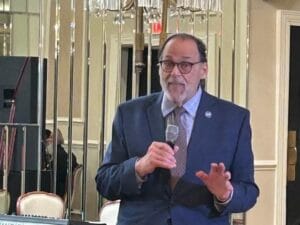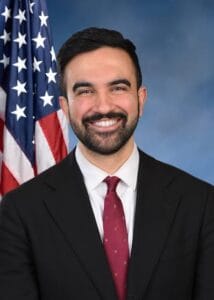Mental health challenges in New York City
Urban living in New York City poses significant mental health challenges, affecting residents across age groups and backgrounds (American Psychological Association, 2020).

Urban living in New York City poses significant Mental Health challenges, affecting residents across age groups and backgrounds (American Psychological Association, 2020).
The densely populated and fast-paced environment, while energizing for some, can lead to heightened stress, anxiety, and depression among others (New York City Department of Health and Mental Hygiene, 2021).
Notably, millennials in NYC face increased mental health risks, with studies highlighting higher rates of depression and anxiety in Manhattan, attributed to career pressures, high cost of living, and limited personal space (Pew Research Center, 2019).
Also Read: Philippines enacts laws to assert South China Sea claims, sparking Beijing tension
These challenges are compounded by social isolation, as forming meaningful connections in the city can be difficult despite the dense population (Cohen & Wills, 1985).
Beyond social and economic factors, physical elements like noise pollution, cramped living spaces, and environmental toxins add to mental health risks (World Health Organization, 2018).
Studies from Columbia University connect NYC’s high air pollution levels to increased rates of mood disorders and oxidative stress, further exacerbating urban dwellers’ psychological strain (Columbia University Mailman School of Public Health, 2020). High noise levels, which are pervasive in NYC, also disrupt sleep and heighten anxiety, affecting overall well-being (Basner et al., 2014).
Recognizing these issues, the city has rolled out substantial mental health initiatives under Mayor Eric Adams, with a $400 million investment aimed at addressing urban-related mental health struggles (New York City Office of the Mayor, 2022).
This includes expanded Harm Reduction Hubs for overdose prevention, culturally tailored youth mental health resources, and a cross-agency dashboard for tracking mental health progress across NYC (New York State Office of Mental Health, 2021). These programs are designed to tackle the mental health crisis through equitable access to resources, community-based support, and preventive measures.
Moreover, NYC residents are encouraged to incorporate personal strategies to counteract urban stressors, such as mindfulness practices and community engagement, which are shown to improve resilience in fast-paced environments (Kabat-Zinn, 1990).
For many, seeking professional counseling or community support is a vital step in managing the mental health impacts of urban life (National Alliance on Mental Illness, 2021).
These efforts reflect a comprehensive, community-focused approach to a deep-seated issue in one of the world’s most dynamic cities, aiming to alleviate the mental health burden on NYC residents.













